
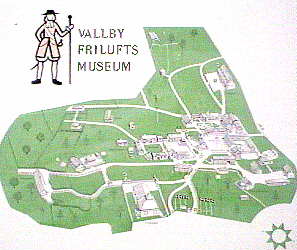
 Bernhard Kauntz, Västerås 1997
. Bernhard Kauntz, Västerås 1997
.
.
VALLBY
OPEN-AIR MUSEUM
.
.
.
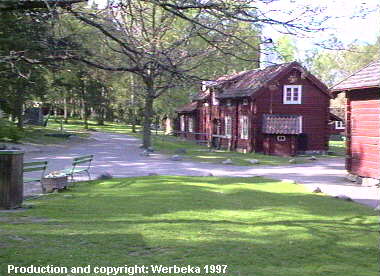 Vallby is located in northwestern Västerås and the open-air museum lies in the corner, which is closest to the city.
The museum is one of Sweden's largest and really worth a visit. When it was created in 1921, the idea was to rebuild a "Västmanland in miniature", and that is still the spirit of it. Many different buildings have been moved here from the entire region, so that the area today really looks like a village from centuries past.
Vallby is located in northwestern Västerås and the open-air museum lies in the corner, which is closest to the city.
The museum is one of Sweden's largest and really worth a visit. When it was created in 1921, the idea was to rebuild a "Västmanland in miniature", and that is still the spirit of it. Many different buildings have been moved here from the entire region, so that the area today really looks like a village from centuries past.
The map on top of this page will give you an idea of how the buildings are placed within the museum. There is the symbol for the open-air museum of Vallby as well, the guard, which originally was a mural painting in a master's cottage.
Strolling around here, you get the impression of calmness and quietness, even if there are a lot of visitors, and even if you can hear the noise from the motorway nearby. But even that isn't nearly as loud as you would expect.
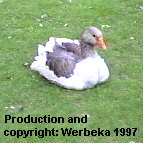 In spite of the peaceful surroundings, there are lots of activities. Many domestic animals make the visit more interesting for children, but they also strengthen the impression of older days. Goats, sheep, hens and geese were a much more important part of daily life, than modern man - mainly living in cities - recognizes.
In spite of the peaceful surroundings, there are lots of activities. Many domestic animals make the visit more interesting for children, but they also strengthen the impression of older days. Goats, sheep, hens and geese were a much more important part of daily life, than modern man - mainly living in cities - recognizes.
A lot of general education is done on these grounds, in the form of activities, which cover many different themes. On the program for this year there is "information on domestic animals", "picking herbs", "believe and tradition with regard to nature", and much about crafts and handicrafts.
Among the buildings, which have been placed in Vallby, there is also an open-air theatre, with entertainment in summer evenings, mostly music. In the mission-hall there is service held on sundays; more profane pleasures are to be found in the café in the Village Square, and in the store you can buy candy exactly as your great grandparents did. (You have to accept that they sell postcards there as well, even if that is a more modern invention.)
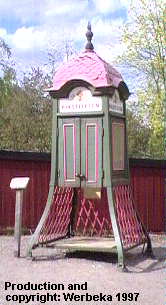 Talking about modernities - in the square there is a public telephone-booth from rather long ago. The first one of this model was used in the year 1901, and they were to keep their place in the streets until the 50's. Inside it you will find a fully functionable phone from our days.
Talking about modernities - in the square there is a public telephone-booth from rather long ago. The first one of this model was used in the year 1901, and they were to keep their place in the streets until the 50's. Inside it you will find a fully functionable phone from our days.
In the center of the village you can find some shops, which are kept open during summer and winter. This makes the feeling of aliveness even stronger. There are a silversmith, a brushmaker, a potter and a textile-artist. Inside, you can take a look at what they are producing (sometimes even while they are at work), and of course buy a souvernir you fancy.
On all of the buildings there are plates (only in Swedish, though), telling you where they came from, what they were used for, and sometimes also when they were built.
Many of the doors are open, so that you can take a look inside, which proves to be a new treasure. It is without any doubt an experience, to see the old, solid furniture, but at the same time reflect on how limited space was in those old cottages. It is rewarding to see those big iron-kettles on the stove, wondering who ever was strong enough to use them. Or to look at the tools, that were in use in the household or in farming. How simple they seem to be and how rough, and how many working-hours were spent on making them, compared to the serial production of our factories. But it is only a little more than a century, since our modern, industrial society had its beginnings.
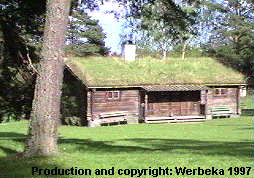 In the last years of the latest century there was even shown a "farm of the Vikings", where you should get the impression of how their civilization was working, but the house burnt down a couple of years later and was not rebuilt.
In the last years of the latest century there was even shown a "farm of the Vikings", where you should get the impression of how their civilization was working, but the house burnt down a couple of years later and was not rebuilt.
My personal favorite among all the buildings, is the little cottage from the 17th century, with its thatched roof, looking as if it had been put there right out of a fairy-tale.
Tourist information:
How to get there:
By car: E 18 to Vallbymotet
By bus: 12 to Högloftsvägen
Open: daily, 10 a.m. - 17 p.m.
Coffee-shop: 11 a.m. - 4. p.m. in summertime
The activities peek during the summermonths.
Free entry to the area.
At some special activities there is an entrance to be paid.
Arrangements for guided groups can be made between
8 - 10 a.m., calling (021 -) 39 80 70.
Back to the  or to the
or to the  of of 
last update: 16.1.1999 by
webmaster@werbeka.com
|

 Bernhard Kauntz, Västerås 1997
Bernhard Kauntz, Västerås 1997 
 Bernhard Kauntz, Västerås 1997
Bernhard Kauntz, Västerås 1997